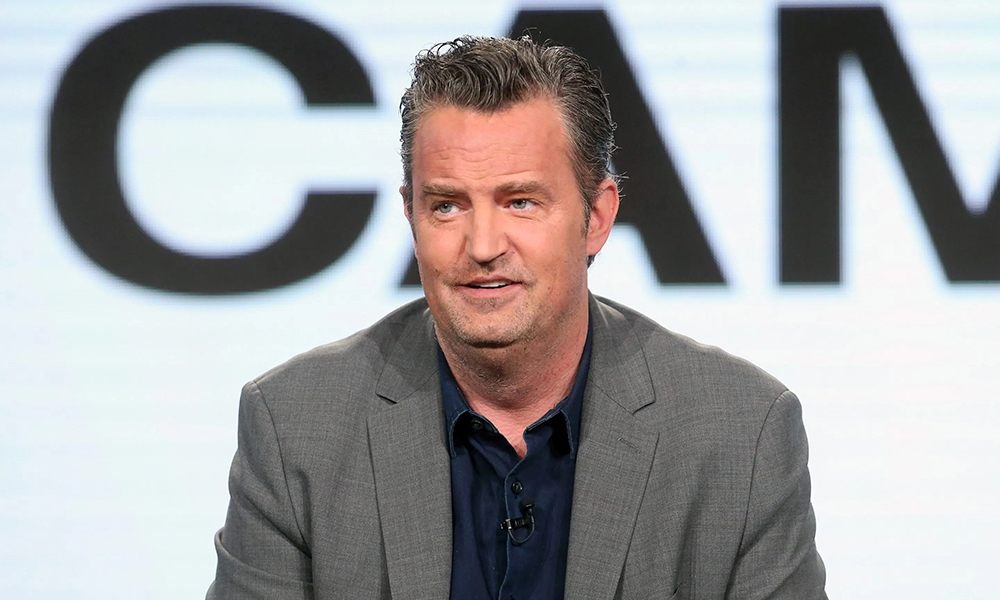
据媒体报道,在深受喜爱的《老友记》(Friends)男星马修·派瑞去世一年后,距离尸检确认他死于麻醉药物氯胺酮的急性作用过去了九个月,洛杉矶当局对药物来源展开调查,并逮捕多人。
上周四,派瑞的私人助理、两位医生和两个熟人被指控涉嫌向派瑞提供或注射氯胺酮。
来自北好莱坞的“氯胺酮女王”贾斯文·桑加和急诊医生萨尔瓦多·普拉森西亚被指控向派瑞的助理提供了造成其死亡的氯胺酮。起诉书称,派瑞的助理肯尼斯·岩政在他去世当天,多次给他注射了氯胺酮。其他人扮演的角色包括协助购买药物和提供注射氯胺酮所使用的注射器等。
洛杉矶县法医局在2023年通过美联社发布的报告显示,54岁的派瑞意外死亡的其他原因,包括“在游泳池的加热端”溺水,以及冠状动脉疾病和用于治疗阿片类药物使用障碍的丁丙诺啡等。
去年10月28日,派瑞在位于洛杉矶太平洋帕利塞德地区的家中被发现时已没有反应,随后被宣告死亡。法医报告称,虽然派瑞曾有过服用毒品的记录,但“据称他已戒毒19个月”。法医称,据报道,他一直在通过氯胺酮注射疗法,治疗抑郁和焦虑。但他最后一次接受治疗是在去世前一周半。
据报道,在去世当天的早些时候,派瑞曾经打过匹克球。他的助理称在外出办事回来后,他发现派瑞脸朝下漂在泳池里。他对调查人员表示,派瑞并未生病,也没有任何健康问题,且近期没有饮酒或吸毒的迹象。
氯胺酮俗称派对毒品“K粉”,最近被作为治疗严重抑郁的突破性药物。但服用氯胺酮存在风险。
什么是氯胺酮?
根据美国缉毒局(U.S. Drug Enforcement Administration)的资料,氯胺酮是医务人员和兽医使用的一种麻醉剂,有一定的致幻作用。这种解离性药物类似于笑气等迷幻药物,能让使用者感觉与身体疼痛和周围环境脱离,扭曲视觉和听觉感知。
氯胺酮被批准用于治疗哪种疾病?
根据美国缉毒局的说法,美国食品药品管理局(U.S. Food and Drug Administration,FDA)批准氯胺酮作为人类和动物低剂量使用的短效麻醉剂,以及作为一种鼻喷剂(艾氯胺酮),与另外一种口服抗抑郁药物联合使用,用于治疗难治性抑郁症。氯胺酮是一种速效抗抑郁药物,用于在等待选择性血清素再摄取抑制剂(SSRI)起效期间填补空白。SSRI可能要数周时间才能发挥效果。
氯胺酮能否用于治疗抑郁?
氯胺酮仅获得FDA批准,作为治疗难治性抑郁症的鼻喷剂。但美国国立健康研究院(U.S. National Institutes of Health)国家医学图书馆(National Library of Medicine)的数据显示,氯胺酮被越来越多的用于“非正规用途”,治疗抑郁、自杀倾向和慢性疼痛等。越来越多诊所通过注射氯胺酮治疗抑郁症。患者在注射氯胺酮期间和之后会接受监测。
是否有可能滥用氯胺酮?
氯胺酮可能被非法用于获得快感,可能作为液体与其他液体混合注射,作为粉末吸食,混入饮料,或者以吸烟的方式使用。它在街头有各种别称,例如Cat Tranquilizer、Cat Valium、Jet K、Kit Kat, Purple、Special K、Special La Coke、Super Acid、Super K、Horse Trank和Vitamin K等。美国缉毒局称,过量服用氯胺酮可能导致失去意识或呼吸严重减慢。
内穆尔儿童健康中心(Nemours Children’s Health)的系统显示,使用者经常将氯胺酮与摇头丸(又被称为“kitty flipping”)或可卡因等其他毒品混合使用,或者掺在大麻卷中。氯胺酮也可能被混在烟草中吸食。
氯胺酮带来的被称为“K洞”的幻觉,通常持续两个小时或更短时间。在这个过程中,使用者可能会出现恶心、呕吐和/或思考和记忆问题。大剂量使用氯胺酮可能会导致行动障碍、身体麻木和呼吸减慢。
过量服用氯胺酮有哪些表现?
过量服用氯胺酮的潜在副作用包括呼吸衰竭和死亡。
氯胺酮能否与丁丙诺啡共同使用?
据称除了氯胺酮外,派瑞还服用过丁丙诺啡,这种药物被FDA批准用于治疗阿片类药物使用障碍。Drugs.com的信息显示,两种药物共同使用会带来“严重”风险,可能加重“头晕、嗜睡、思维混乱、无法集中注意力、过度镇静和呼吸衰竭”等副作用。该网站建议两种药物的使用者“在了解药物对自己的影响之前,避免进行需要高度集中注意力的活动,如开车、操作危险机械等,或从事潜在危险活动”。(财富中文网)
美联社为本报道提供了协助。
译者:刘进龙
审校:汪皓
据媒体报道,在深受喜爱的《老友记》(Friends)男星马修·派瑞去世一年后,距离尸检确认他死于麻醉药物氯胺酮的急性作用过去了九个月,洛杉矶当局对药物来源展开调查,并逮捕多人。
上周四,派瑞的私人助理、两位医生和两个熟人被指控涉嫌向派瑞提供或注射氯胺酮。
来自北好莱坞的“氯胺酮女王”贾斯文·桑加和急诊医生萨尔瓦多·普拉森西亚被指控向派瑞的助理提供了造成其死亡的氯胺酮。起诉书称,派瑞的助理肯尼斯·岩政在他去世当天,多次给他注射了氯胺酮。其他人扮演的角色包括协助购买药物和提供注射氯胺酮所使用的注射器等。
洛杉矶县法医局在2023年通过美联社发布的报告显示,54岁的派瑞意外死亡的其他原因,包括“在游泳池的加热端”溺水,以及冠状动脉疾病和用于治疗阿片类药物使用障碍的丁丙诺啡等。
去年10月28日,派瑞在位于洛杉矶太平洋帕利塞德地区的家中被发现时已没有反应,随后被宣告死亡。法医报告称,虽然派瑞曾有过服用毒品的记录,但“据称他已戒毒19个月”。法医称,据报道,他一直在通过氯胺酮注射疗法,治疗抑郁和焦虑。但他最后一次接受治疗是在去世前一周半。
据报道,在去世当天的早些时候,派瑞曾经打过匹克球。他的助理称在外出办事回来后,他发现派瑞脸朝下漂在泳池里。他对调查人员表示,派瑞并未生病,也没有任何健康问题,且近期没有饮酒或吸毒的迹象。
氯胺酮俗称派对毒品“K粉”,最近被作为治疗严重抑郁的突破性药物。但服用氯胺酮存在风险。
什么是氯胺酮?
根据美国缉毒局(U.S. Drug Enforcement Administration)的资料,氯胺酮是医务人员和兽医使用的一种麻醉剂,有一定的致幻作用。这种解离性药物类似于笑气等迷幻药物,能让使用者感觉与身体疼痛和周围环境脱离,扭曲视觉和听觉感知。
氯胺酮被批准用于治疗哪种疾病?
根据美国缉毒局的说法,美国食品药品管理局(U.S. Food and Drug Administration,FDA)批准氯胺酮作为人类和动物低剂量使用的短效麻醉剂,以及作为一种鼻喷剂(艾氯胺酮),与另外一种口服抗抑郁药物联合使用,用于治疗难治性抑郁症。氯胺酮是一种速效抗抑郁药物,用于在等待选择性血清素再摄取抑制剂(SSRI)起效期间填补空白。SSRI可能要数周时间才能发挥效果。
氯胺酮能否用于治疗抑郁?
氯胺酮仅获得FDA批准,作为治疗难治性抑郁症的鼻喷剂。但美国国立健康研究院(U.S. National Institutes of Health)国家医学图书馆(National Library of Medicine)的数据显示,氯胺酮被越来越多的用于“非正规用途”,治疗抑郁、自杀倾向和慢性疼痛等。越来越多诊所通过注射氯胺酮治疗抑郁症。患者在注射氯胺酮期间和之后会接受监测。
是否有可能滥用氯胺酮?
氯胺酮可能被非法用于获得快感,可能作为液体与其他液体混合注射,作为粉末吸食,混入饮料,或者以吸烟的方式使用。它在街头有各种别称,例如Cat Tranquilizer、Cat Valium、Jet K、Kit Kat, Purple、Special K、Special La Coke、Super Acid、Super K、Horse Trank和Vitamin K等。美国缉毒局称,过量服用氯胺酮可能导致失去意识或呼吸严重减慢。
内穆尔儿童健康中心(Nemours Children’s Health)的系统显示,使用者经常将氯胺酮与摇头丸(又被称为“kitty flipping”)或可卡因等其他毒品混合使用,或者掺在大麻卷中。氯胺酮也可能被混在烟草中吸食。
氯胺酮带来的被称为“K洞”的幻觉,通常持续两个小时或更短时间。在这个过程中,使用者可能会出现恶心、呕吐和/或思考和记忆问题。大剂量使用氯胺酮可能会导致行动障碍、身体麻木和呼吸减慢。
过量服用氯胺酮有哪些表现?
过量服用氯胺酮的潜在副作用包括呼吸衰竭和死亡。
氯胺酮能否与丁丙诺啡共同使用?
据称除了氯胺酮外,派瑞还服用过丁丙诺啡,这种药物被FDA批准用于治疗阿片类药物使用障碍。Drugs.com的信息显示,两种药物共同使用会带来“严重”风险,可能加重“头晕、嗜睡、思维混乱、无法集中注意力、过度镇静和呼吸衰竭”等副作用。该网站建议两种药物的使用者“在了解药物对自己的影响之前,避免进行需要高度集中注意力的活动,如开车、操作危险机械等,或从事潜在危险活动”。(财富中文网)
美联社为本报道提供了协助。
译者:刘进龙
审校:汪皓
Almost a year after the death of beloved Friends star Matthew Perry—and nine months after an autopsy concluded he had died from the acute effects of the anesthetic ketamine—several arrests have reportedly been made by Los Angeles authorities as part of their investigation into the source of the drug.
Perry’s personal assistant, two doctors, and two acquaintances were indicted and charged on Thursday with roles that included providing or administering the drug.
Jasveen Sangha of North Hollywood, known as the “Ketamine Queen,” and Salvador Plasencia, an urgent care physician, were charged with providing Perry’s assistant with the ketamine that led to the actor’s death. The assistant, Kenneth Iwamasa, according to reports of the indictment, injected Perry with the drug multiple times on the day he died. Roles of the others involved include assisting with the procurement of the drug and supplying the syringe used to inject the ketamine.
Drowning “in the heated end of his pool” also contributed to the 54-year-old actor’s accidental death—as did coronary artery disease and buprenorphine, used to treat opioid use disorder, according to reports by the Los Angeles County Department of Coroner via the Associated Press in 2023.
Perry was declared dead after being found unresponsive at his home in the Pacific Palisades area of Los Angeles on Oct. 28. While the actor had previously taken drugs, he had been “reportedly clean for 19 months,” according to the coroner’s report. He had reportedly received ketamine infusion therapy for depression and anxiety, the coroner wrote. But his last treatment was reported to have occurred a week and a half before his death.
Perry had reportedly played pickleball earlier in the day. His assistant, who said he found him face down in the pool after returning from running errands, told investigators that the actor hadn’t been sick, made any health complaints, or shown evidence of recent alcohol or drug use.
Ketamine, popularly known as the party drug Special K, has recently been hailed as a breakthrough treatment for major depression. But it is not without risks.
What is ketamine?
Ketamine is an anesthetic used by medical providers and veterinarians with some hallucinogenic effects, according to the U.S. Drug Enforcement Administration. A dissociative drug similar to psychedelics like nitrous oxide, it makes users feel detached from their pain, as well as their environment, distorting perception of sight and sound.
What is ketamine approved to treat?
It’s been approved by the U.S. Food and Drug Administration, in low doses, for use as a short-acting anesthetic in humans and animals, and as a nasal spray (esketamine) for treatment-resistant depression in conjunction with another oral antidepressant, according to the DEA. It’s a fast-acting antidepressant, used to bridge the gap while waiting for SSRIs to kick in, which can take weeks.
Can ketamine be used for depression?
Ketamine is only FDA-approved for use as a nasal spray in treatment-resistant depression. But it’s increasingly used “off label” for treating depression, suicidal ideation, and chronic pain, according to the U.S. National Institutes of Health’s National Library of Medicine. An increasing number of clinics offer infusions for the treatment of depressions. Patients are monitored during and after the infusion.
Is it possible to abuse ketamine?
It can be used illegally to get high—via an injectable, liquid mixed with other liquids, or a powder to be snorted, mixed in drinks, or smoked. On the street it’s sometimes known by the names Cat Tranquilizer, Cat Valium, Jet K, Kit Kat, Purple, Special K, Special La Coke, Super Acid, Super K, Horse Trank, and Vitamin K. An overdose can lead to loss of consciousness and dangerously slowed breathing, according to the DEA.
Users often partake of it with other drugs like Ecstasy (called “kitty flipping”), or cocaine, or sprinkle it on marijuana blunts, according to the Nemours Children’s Health system. It can also be smoked with tobacco.
The trip, called the “K hole,” usually lasts two hours or less. During this time, users may become nauseated, vomit, and/or have thinking and memory problems. High doses may cause movement issues, body numbness, and slowed breathing.
What are signs of a ketamine overdose?
Potential side effects of an overdose include respiratory failure and death.
Should ketamine and buprenorphine be used together?
Perry reportedly had buprenorphine—a medication approved by the FDA to treat opioid use disorder—in his system, in addition to ketamine. Using the two drugs together poses a “major” risk and can increase side effects like “dizziness, drowsiness, confusion, difficulty concentrating, excessive sedation, and respiratory depression,” according to Drugs.com. It advises users of both to “avoid activities requiring mental alertness such as driving, operating hazardous machinery, or engaging in potentially hazardous activities until you know how the medications affect you.”
The Associated Press contributed to this report.






